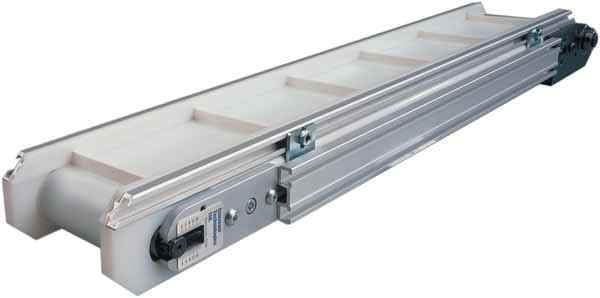

LOW PROFILE CONVEYORS
|
|
|
SLASHING
COST OF DOWN-TIME AND MAINTENANCE ON LOW
PROFILE CONVEYORS A recent
article in a major periodical discusses the merits of “Proactive
Maintenance”. Some suggest that
Proactive Maintenance can yield more than a ten-fold savings over contemporary
predictive / preventive programs. While
predictive and preventive maintenance attempt to regulate symptoms before
breakdown, the intent of Proactive Maintenance is to reduce or eliminate the
basic causes. To be
effective, Proactive Maintenance must begin at the evaluation stage.
Until we understand, and accept the cause of our problems, we cannot
expect to reduce or eliminate them. The
following evaluations are based on over twenty-five years of Low-Profile
Conveyor association, and are intended to reveal the root cause of common
problems found in various Low-Profile Conveyors.
Reviewing service manuals can also be helpful, unlike advertising, they
tend to reveal the products true nature. Low
Profile Conveyors as discussed here-in, are considered as utilizing pulleys
1.0” to 2.0” in diameter, with high tensile polyurethane belting, and
limited to 24” maximum width. Pulleys in
the lower size range will normally reduce belt fatigue life.
Average belt fatigue life on a conveyor with 1.3” diameter pulleys will
never equal that of a conveyor with 2” diameter pulleys using the same belt.
This is because the belt surface stress on the 1.3” pulley is
approximately 56% greater than that of the 2” pulley.
This reduced stress of the 2” pulley also allows using a heavier more
durable belt that could not be applied to the 1.3” pulley. Utilizing
UNCROWNED pulleys with a small vee-guide to control tracking, is not recommended
by many belting sources due to vee-guide wear, and can lead to reduced life of a
more costly belt. The majority of all belting sources normally recommend
crowning as the first choice for controlling belt tracking.
Use of properly applied vee-guides should be in conjunction with crowned
pulleys. Pulleys
with sharp knurling to offset low tension can reduce belt life due to the
abrasive action of the knurl. Abrasion
residue build up in the knurl may cause belt slippage, and miss-tracking,
resulting in unexpected down-time. The
pulley knurl can eventually also become worn by this abrasion and require
replacement. Bearings
are the heart of the conveyor, however, they can also be the number one problem
area. Small bearings with
insufficient capacity can encounter greatly reduced life if merely subjected to
increased loads caused by added belt tension. Bearings
lacking a self-aligning feature can be subjected to over-stressing induced by
drive pulley deflection, and miss-alignment.
Small pulley diameters also accelerate bearing failure, a 1.3” pulley
utilizing identical bearings and belting conditions as a 2” pulley, would have
an average bearing life only 65% of the 2” pulley.
This is because the 2” pulley runs at a much lower R.P.M. to produce
the same belt speed. Drives
utilizing a flexible coupling to connect the reducer output to the pulley can
also induce additional pulsating bearing loads to both the reducer and pulley
bearings. This not only increases
bearing wear, but also necessitates maintenance on the coupling.
Utilizing the pulley shaft as the bearing inner race should be avoided.
If the shaft is not made of bearing quality steel, and properly heat
treated it can become the weak link in the bearing system.
Failure normally requires replacement of not only the bearings, but also
a more costly pulley or shaft. This
construction also exposes these multiple bearing elements to contamination
during storage, assembly, and replacement. Due to
these numerous bearing deficiencies, many major conveyor producers exempt
bearings, and reducers from their warranty.
A major
disregard for these maintenance problems and the labor involved is costing
industry millions each year. The
simple function of increasing belt tension and retracking can require an 833%
increase in procedures by one producer over that of another.
Belt changing on stand mounted conveyors can be accomplished forty times
faster by one producer than others. This
same producer can exchange a complete drive in the same time ratio.
Modern sealed for life bearing and drive technology can totally eliminate
all relubrication and its related contamination. Allow your
company to eliminate this costly waste, and begin your “PROACTIVE MAINTENANCE
PROGRAM” Light-Years ahead, by eliminating all of the aforementioned negative
aspects. Selection of a product for
a non-essential reason merely to save a few dollars is rarely a valid reason if
it may cost you or your customer thousands in lost production, and maintenance. CONTACT:
CONVEYOR TECHNOLOGIES LTD
Phone: (513) 248-0663
Fax: (513)
248-0685
E-Mail: mail@conveyortechltd.com TP1106A |
Send mail to WebMaster@ConveyorTechLtd.com with
questions or comments about this web site.
|